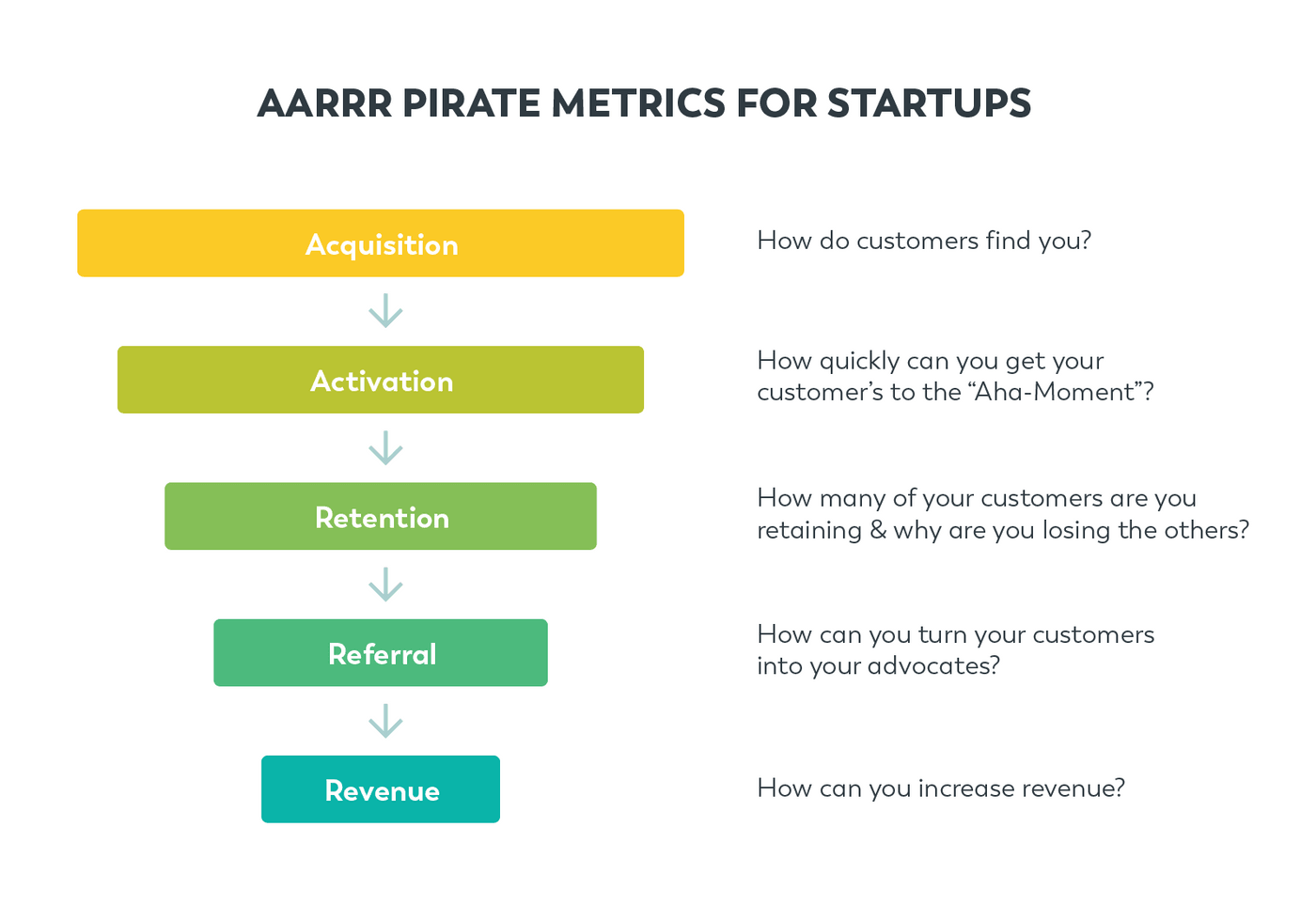Startup founders and teams looking to make the most of limited resources must first measure their results. However, tracking metrics that mean little to your company’s actual goals can prove inefficient, at best.
At worst, measuring the wrong things and basing your business decisions on such measurements can actually hold your company back and cause it to fail. AARRR metrics were devised to avoid those pitfalls and ensure the measurements your startup focuses on actually matter for its long-term success.
What are AARRR metrics?
AARRR metrics are essentially a framework through which meaningful metrics may be discovered, categorized, utilized, and optimized in accordance with your most pressing business goals.
AARRR stands for “acquisition, activation, retention, referral, and revenue.” Using AARRR involves placing metrics in the most appropriate categories and eliminating unnecessary metrics that don’t suit your needs. You may have noticed that each of these categories centers on a type of action users can take. Here’s how they break down:

Acquisition
In this category, the origins of the paying customers your business engages with are discovered and monitored.
Your users are taking action by interacting with your company, and metrics that can tell you where they’re coming from can help you obtain more. Acquisition metrics should not only tell you where your users are coming from, but also what kinds of channels they’re using to touch base with your business. Marketing channels such as search engine optimization (SEO), social media, and traditional ads factor into this category.
Activation
Activation metrics measure happiness - customer happiness - and willingness to take their engagement with your business to the next level.
Metrics in this category tell you just how many potential customers are converting to paying customers or being “activated.” With this information, you can choose to prioritize certain marketing and management strategies over others. Signups, purchases, and subscriptions are lumped into this category.
Retention
Metrics in the retention category help explain two important things:
- How many customers you are retaining
- Why ex-customers are leaving
Engagement metrics make the cut for inclusion in this category. For instance, metrics that measure your customer churn rate can help you decide if your offering is truly serving your customers. Any other metrics that help your team keep tabs on the number of times a customer comes back to your business and takes positive action can be used to flesh out your retention category.
Referral
This category of metrics is meant to reveal the likelihood of your customers actually recommending your product or service to friends, family, and acquaintances.
Referral metrics benefit from your team’s efforts to provide more value for your customers. You can also generate more referrals among your customers by simplifying the process for them as much as possible.
Revenue
The revenue category applies to any metrics that support revenue improvement goals within your company.
By asking yourself and your team whether any of the behavior you’ve highlighted or discovered in the previous categories can be further monetized, you can plot a clear development course for your business to take. You may unearth new revenue opportunities in price alignment or added benefits such as ongoing support. Measuring customer acquisition cost and lifetime value can yield such insights and more.
How AARRR metrics measure a company’s growth
The AARRR framework is an excellent way for startups to plot and monitor their growth over time. However, there’s more to this framework than using metrics and making pirate jokes. Here are the main steps companies should follow to take full advantage of this method:
- Choosing metrics. With the above descriptions of each category in mind, your team can create its own collection of helpful metrics and make better use of them.
- Tracking metrics. Once you’ve chosen which metrics to use, you can begin tracking them to learn more about your audience.
- Testing findings. The information that you gather from your customers over time can be assessed and tested to find better ways of doing what you do. At this point, many businesses choose to use A/B tests to gauge what ideas work best and discard those that underperform.
- Leveraging insights. With all of the data gathering and testing your team has done, you should be in a much better position to implement meaningful changes in your business. These changes could affect any area of your business and are likely to be successful if they’re based on successful tests.
AARRR metrics make startups smarter
Being a pirate has its perks, and picking up on user patterns that may have eluded you without the right metrics can make a real difference in hoisting your fledgling company’s sails. To learn more about metrics and how you can continue to refine your own digital product offerings, check out VeryCreatives today.
